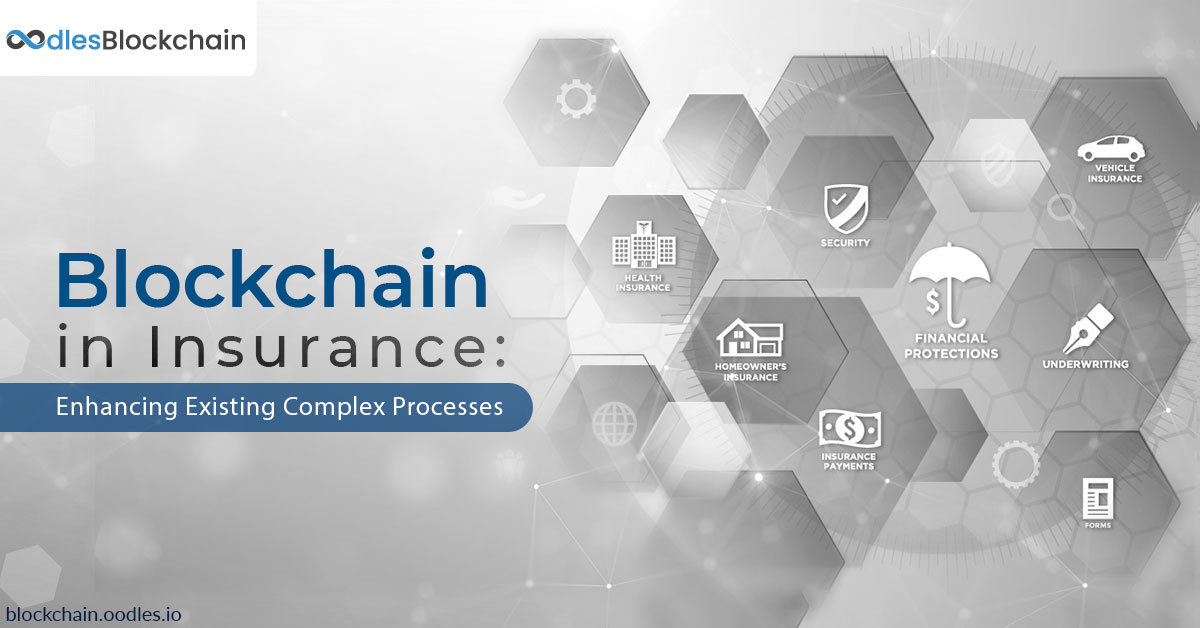-
Blockchain is one of those technological advancements that businesses must explore. Top benefits of blockchain, efficiency, accuracy, and cost savings can enable digital transformation with significance. The insurance industry is among the first to explore its potential for operational efficiency. Industry leaders, including the World Economic Forums, have begun acknowledging the impact of blockchain in the insurance industry.
Blockchain Technology
Blockchain is a feature-rich distributed ledger technology (DLT) that serves as the underlying infrastructure for business applications and solutions. Essentially, a blockchain is a ledger shared across a network of computers in which a peer-to-peer method controls the input and maintenance of data with immutability. The P2P mechanism restricts any centralized authority or intermediary to manage the ledger or the network. The ledger stores inputs as an unalterable chain of transaction blocks once validated and transmitted with network consensus.
Blockchain in Insurance
Financial services providers are employing blockchain based applications due to its potential for disintermediation of operations and services, transparent and fast data reconciliation, and efficient transformation of legacy business models. Comparatively, insurers have not been able to cope with recent developments in technology and changing customer preferences. However, the industry is dynamic enough to gain benefit from the blockchain technology. Blockchain can enable insurance providers to increase operational efficiency, cut costs, improve data quality, and enhance customer experience. Studies indicate that 46% of insurers are open to integrating blockchain in the coming years. Also, 84% of insurers believe that blockchain and smart contracts applications can transform the way that they engage with new partners and customers.
The potential of blockchain can improve existing insurance processes, as well as enable new insurance practices. Enhancing current insurance processes means, as a use case, insurers can use it to pay salaries, premiums, and claims. On the other hand, forming new insurance practices requires a more radical implementation of blockchain app development. It involves executing actual insurance processes over smart contracts and decentralized applications (dApps).
Enhancing Existing Insurance Processes with Blockchain
Revamping insurance processes with blockchain means the integration of technology to complement existing business practices.
Blockchain enables participants to share real-time data in an authentic and traceable manner. Whenever a user adds a file to the blockchain database or requests to change it later, it counts as a new transaction that is stacked and time-stamped across the network. Subsequently, it makes the history of any file completely transparent from beginning to end. With private chains or a combination of public and private chains, companies can grant access to information on a need-to-know basis. These things enable a blockchain solution or a distributed ledger to leave no single point of failure. They also ensure security and resilience than other traditional databases. Further, the capability to share data securely greatly enhances insurance operations and improves data quality, which ultimately reduces associated costs.
KYC/AML
Regulatory compliance requirements like Know-your-customer and anti-money laundering (KYC/AML) prove complex for banks and insurance companies. With a blockchain-powered shared database, they can streamline KYC/AML compliance while reducing the cost.
Any single institution within the blockchain network onboard a customer for once. Then, others can use the same information to onboard that customer in comparatively less time.
For instance, a customer wants to use the services of a new institution. That institution can access the documentation already stored on-chain and perform due diligence. Here, encryption ensures that the institution gets access to only shareable information of documents.
Fraud Prevention
Fraud is an obstacle for the insurance industry. A blockchain-enabled shared database that has different levels of data access and control between insurers and policyholders can combat fraud. It can enable insurers to prevent double-booking or processing multiple claims from the same accident. It can determine ownership of high-value items with immutable digital certification.
Fraud mitigation is one of the compelling blockchain’s use cases in the insurance industry, having huge sums at stake.
Find complete details here: Preventing Insurance Frauds with Blockchain.
Reinsurance
Blockchain can improve payment transfer and information sharing between insurers and reinsurers. With a blockchain-enabled shared database, insurers can use smart contracts to enter data onto it and make it accessible to reinsurers, retrocessionaires, and regulators on a need-to-know basis in real-time. Then, authorities can also extract data from the blockchain for modeling, audits, and compliance checks. In a nutshell, it can reduce risk, process claims with automated notification to relevant participants, and automate settlement and reconciliation of payments. A permissioned blockchain can improve data quality while reducing costs, errors, and time.
However, its implementation will require integrated cooperation among insurers and reinsurers.
For more detailed information on Blockchain in Reinsurance, visit this blog.

Our Offices
INDIA
Emaar Digital Greens, Sector 61,
Gurugram, Haryana
122011.
Welldone Tech Park,
Sector 48, Sohna road,
Gurugram, Haryana
122018.














